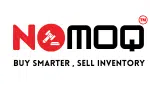Procuring metal commodities is an essential aspect of manufacturing, and doing it efficiently can make a huge difference in your bottom line. By streamlining your metal procurement process, you can reduce costs, improve supplier relationships, and ultimately, produce better quality products.
In this blog, we’ll outline five ways to streamline your metal procurement process with practical examples.
- Establish a Clear Procurement Strategy The first step to streamlining your metal procurement process is to establish a clear procurement strategy. This strategy should define your company’s goals, objectives, and requirements for metal procurement. It should also outline the process for identifying potential suppliers, selecting the best ones, and negotiating pricing and contracts.
Practical Example: Company A was struggling to manage their procurement process. They had no clear strategy and were working with multiple suppliers without any formal agreements. Once they established a clear procurement strategy, they were able to consolidate their suppliers, negotiate better pricing, and reduce lead times.
- Implement a Metal Procurement Software Investing in a metal procurement software can significantly streamline your procurement process. A software solution can automate manual tasks, reduce errors, and provide real-time data and insights into your procurement operations. It can also help you manage your suppliers more effectively, track orders, and monitor inventory levels.
Practical Example: Company B implemented a metal procurement software and was able to automate their order placement process. They no longer needed to manually enter orders, reducing the risk of errors and saving time. Additionally, they could monitor their inventory levels and adjust orders accordingly, reducing excess inventory and stock-outs.
- Focus on Supplier Relationship Management Building strong relationships with your suppliers is key to a streamlined procurement process. A good relationship can lead to better pricing, faster lead times, and improved quality. Focusing on supplier relationship management means understanding your suppliers’ capabilities, communicating your requirements clearly, and working collaboratively to achieve shared goals.
Practical Example: Company C took the time to build strong relationships with their suppliers. They regularly communicated their requirements and worked collaboratively to address any issues that arose. As a result, they were able to negotiate better pricing, reduce lead times, and improve the quality of their metal commodities.
- Utilize Electronic Data Interchange (EDI) Electronic Data Interchange (EDI) is a method of exchanging business documents electronically between different companies. Utilizing EDI in your procurement process can help reduce errors and delays, as well as improve the speed and accuracy of data exchange. It can also help you automate tasks and provide real-time visibility into your procurement operations.
Practical Example: Company D implemented EDI to streamline their metal procurement process. They were able to automate order placement, invoice processing, and shipment tracking, reducing manual errors and saving time. Additionally, they could monitor their procurement operations in real-time, enabling them to make better decisions and adjust their strategies accordingly.
- Monitor Key Performance Indicators (KPIs) Monitoring Key Performance Indicators (KPIs) is critical to understanding the effectiveness of your procurement process. KPIs can help you identify areas for improvement, measure progress towards your goals, and track supplier performance. Common procurement KPIs include lead time, cost savings, inventory turnover, and quality.
Practical Example: Company E regularly monitored their procurement KPIs and identified areas for improvement. They focused on reducing lead times and improving quality, resulting in fewer delays and better quality products. By tracking their KPIs, they could also measure their progress and adjust their procurement strategy accordingly.
In conclusion, streamlining your metal procurement process can help you reduce costs, improve supplier relationships, and ultimately, produce better quality products. By establishing a clear procurement strategy, implementing a metal procurement software, focusing on supplier relationship management, utilizing EDI, and monitoring key performance indicators, you can take your metal procurement

